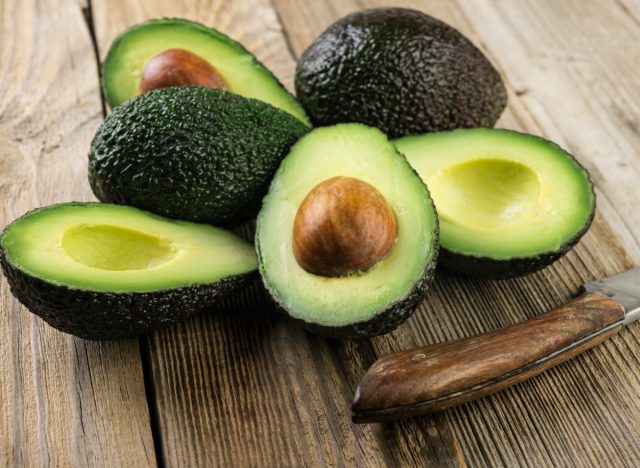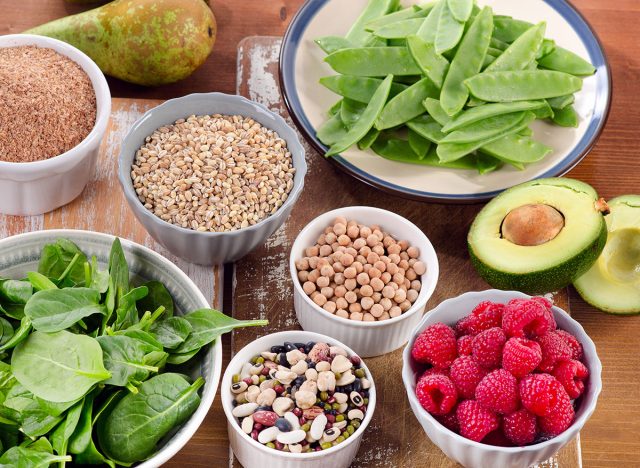Having a stroke can be a terrifying, traumatic event. Strokes occur when blood flow is blocked and can’t reach your brain, which can be due to weakened or ruptured arteries or the bursting of a blood vessel. While this is scary to think about, the good news is that you can oftentimes lower your risk of stroke.
People with heart issues or heart disease, diabetes, high blood pressure, and high cholesterol are at greater risk of stroke. This is why finding a diet and fitness plan that can help lower the risk of these chronic diseases is key in helping to prevent or lower your risk of stroke.
To learn more, we talked with some dietitians about their advice on the best eating habits to reduce stroke risk. Read on, and for more healthy heart tips, check out 4 Worst Breakfast Habits for Blood Pressure.


“Healthy fats and omega-3s help the brain stay healthy and can help ward off brain diseases. My top healthy fat foods are salmon, avocado, and chia seeds,” says Morgyn Clair, MS, RDN, a registered dietitian nutritionist and author at Fit Healthy Momma.
You can also incorporate more healthy fats by making intentional choices with what you’re using to cook your food. For example, “swap your cooking spray with olive oil or canola oil,” says registered dietitian nutritionist Rachel Fine, RDN, the founder of To The Pointe Nutrition.


“High sodium intakes are linked with hypertension, which contributes to stroke risk. Studies have shown that moderate sodium intake has a protective effect for strokes,” says Clair.
According to a 2021 report published in Stroke, higher intakes of sodium were related to an increased stroke risk, which is why the American Heart Association published new guidelines for eating less than or equal to 1,500 milligrams of sodium a day.
READ RELATED: 5 Viral Food Challenges That Were Straight up Dangerous


The CDC lists its specific guidelines for living a lifestyle that can help reduce the risk of stroke. On this list are things like maintaining regular exercise, limiting your alcohol consumption, and eating a healthy diet. When it comes to a “healthy diet,” the CDC suggests eating foods low in saturated fats, eating plenty of fruits and vegetables, and getting enough fiber every day.
In a meta-analysis that looked into over 8,900 cases of stroke, it was found that eating fiber helped to reduce the risk of stroke. This decrease in risk was about 12% for every 10 grams of added fiber throughout the day, according to the report.


Another important eating habit for stroke prevention is limiting your consumption of red meat, mainly due to its high saturated fat content.
According to a review published in Stroke and Vascular Neurology, replacing saturated fats like red meat with more Mediterranean-inspired healthy fats helps to reduce the risk of stroke.


One thing that Fine believes is truly helpful for your overall health is focusing less on just weight loss, and instead eating a balanced, healthy diet.
“Lastly, consider healing your relationship with food and removing the pressure of only focusing on weight loss. Lifestyle changes, regardless of whether weight is lost, have been associated with statistically and clinically relevant improvements in physiological measures like blood pressure and blood lipids,” says Fine.
Source:











